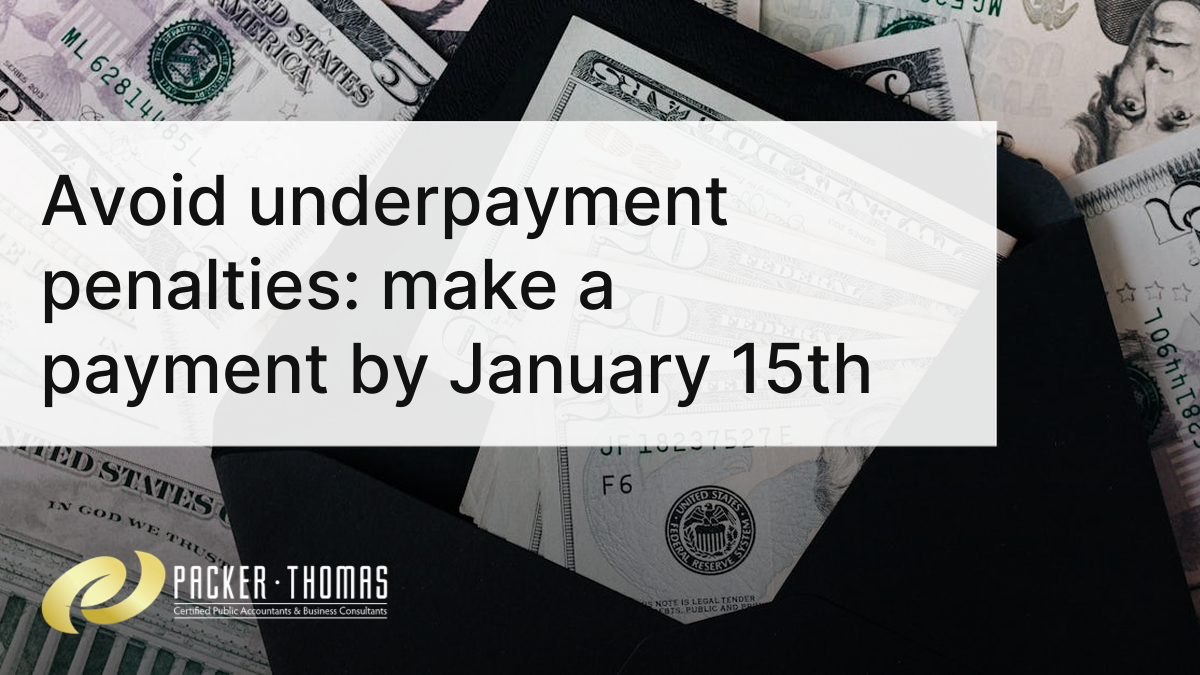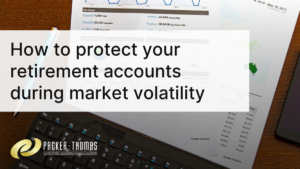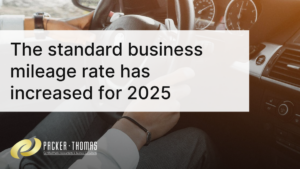Executive Summary
Taxpayers who pay quarterly estimated taxes face a critical January 15th deadline to avoid rising underpayment penalties, which have increased significantly due to higher interest rates (around 8% in 2024 compared to 3% a few years ago). Those required to make estimated payments include individuals, self-employed professionals, and businesses with insufficient withholding from income sources. To avoid penalties, taxpayers can ensure payments cover at least 90% of their current year’s tax liability, utilize the safe harbor rule by paying 100% of last year’s taxes (110% for higher incomes), adjust withholding, or adopt the annualized income method for fluctuating earnings. Staying proactive by covering shortfalls before the deadline not only avoids penalties but also sets the stage for better tax planning in the year ahead. Consulting a CPA ensures accuracy and effective strategies, especially for complex or variable income situations.
Avoid underpayment penalties: make a payment by January 15th
If you’re someone who pays quarterly estimated taxes, there’s a critical deadline approaching: January 15th. By this date, you’ll need to have paid at least 90% of your total tax liability for the year to avoid underpayment penalties. These penalties have risen sharply due to higher interest rates. For most of 2024, underpayment interest fees were around 8%, compared to just 3% a few years ago. That difference can quickly add up, making it more important than ever to stay on top of your payments.
Who should be paying estimated taxes?
Not everyone needs to worry about quarterly estimated taxes, but they’re a must for certain taxpayers. This includes individuals, self-employed professionals, and businesses that don’t have enough tax withheld from regular income sources. You’re required to make estimated payments if:
-
You expect to owe at least $1,000 in taxes after accounting for withholding and credits.
-
Your withholding covers less than 90% of your total tax liability for the year.
This usually applies to freelancers, small business owners, landlords, and others with non-traditional income streams. If you’re unsure whether this applies to you, it’s worth consulting your CPA for a clear answer.
Strategies to avoid costly penalties
Pay 90% of your current year’s tax liability
The most straightforward way to avoid penalties is to ensure your estimated payments, combined with withholding, equal at least 90% of what you owe for the current tax year. By now, you likely know your total income for 2024, so you should have a baseline idea of your current tax liability.
Meet the safe harbor rule
If your income fluctuates, the safe harbor rule offers an alternative. By paying 100% of last year’s tax liability (or 110% if your AGI was over $150,000), you can sidestep penalties even if this year’s taxes are higher.
Adjust withholding to cover shortfalls
If you’re falling short on estimated payments, adjusting your withholding on your W-4 may be a practical solution if you have an employer. Reducing the number of dependents or adding an extra withholding amount on line 4(c) can help ensure enough tax is withheld from each paycheck to cover your tax bill. Using the IRS withholding estimator is a great way to check if you’re on track.
Use the annualized income method
For those with fluctuating income, such as seasonal business owners or gig workers, the annualized income installment method allows payments to align with actual income earned each quarter. This approach minimizes penalties by reflecting your income variations.
Why it’s worth staying ahead
Underpayment penalties can snowball quickly, especially with interest rates now more than double what they were just a few years ago. Yet, these penalties are entirely avoidable. By covering any shortfalls by the January 15th deadline, you not only avoid unnecessary costs but also position yourself for a smoother start to the new year.
This is also an ideal time to rethink your tax planning for the year ahead. Adjusting your W-4 to better match your tax liability or revising your budget to ensure you’re setting aside sufficient funds for quarterly estimated payments in 2025 can help you stay ahead. A proactive approach now can save stress, time, and money down the road.
Work with your CPA
Estimated taxes and penalty calculations can get tricky, especially when dealing with fluctuating income, changing tax laws, or uncertainties around which safe harbor rules apply. That’s where your Packer Thomas CPA comes in. A quick review with your advisor can help you double-check your tax liability, strategize withholding and payments, and stay within safe harbor rules.
Don’t wait until the last minute; connect with your Packer Thomas CPA, or call the Canfield or New Castle office today to ensure you’re on track and prepared for the year ahead.
For over 100 years, Packer Thomas has served generations of business owners, families, and others with tax, auditing, accounting, and information technology services. But we didn’t last that long by standing still. We’ve evolved to meet the needs of our clients who are also facing challenging changes in their financial, tax, and information technology environments.
**Disclaimer:**
The information provided in this blog is based on current tax law as of the time of publication. However, tax laws and regulations are subject to change, and the content may not reflect the most current legal or tax developments at the time of your reference. This blog is for general informational purposes only and should not be considered as specific tax advice. We recommend consulting with your Packer Thomas professional for personalized guidance or to address any specific questions you may have.







